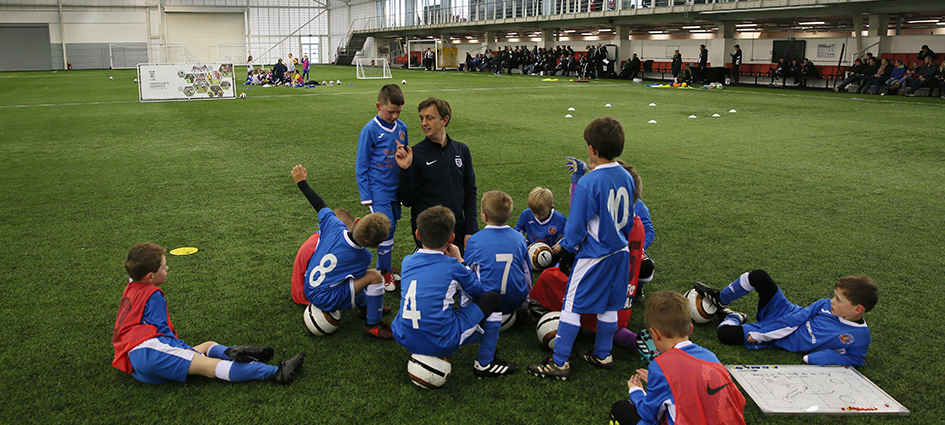Behaviour management

How planning can help prevent poor player behaviour
- Peter Glynn
- 25 July 2019
Planning strategies for better player behaviour is just as important as planning for coaching points, explains FA coach educator, Merf Roberts.
It's an issue that's a part of the coaching process that every coach in the game will have experienced, regardless of level or experience.
In fact, poor player behaviour ranked second in a recent survey looking at the areas of the game grassroots coaches wanted most help with. But it doesn't have to be a longstanding concern. Merfyn Roberts, FA coach educator, believes that equipping coaches with strategies and confidence will help. The first piece of advice: better sessions can lead to fewer problems.
“The better the practice sessions you put on the less need there should be for behaviour management. The more we can engage the kids in the practices the fewer problems there will be,” explains Roberts, who has led the social corner aspect of the FA Advanced Youth Award, the highest youth coaching qualification, since its inception in 2011.
“Part of that is putting on sessions that give empowerment and ‘hook the kids in’ by giving them some choice and input. That’s all part of preventing bad behaviours,” he adds, acknowledging that handing all the influence to the players requires high-level skill. Small steps are required.

Setting clear boundaries and expectations, communicating a learning objective and preparing arrival activities are other pieces of best practice encouraged by Roberts.
“Take the Saturday morning coaching scenario: when the players arrive the session theme should be written on a whiteboard, the practice area should be marked and the footballs ready. When the kids start arriving they can go straight into the first activity.
“During that time they can be chatting away about what they’ve been doing at school and all the stuff the coach doesn’t really want to listen to. By building this into the routine you’re recognising they are social animals and they need to do that – this is especially true of the younger players in grassroots,” he adds.
The kids need to know what the boundaries are from the start
“Traditionally, there are coaches who want to stand there and give out the orders and they expect kids to listen to them and not to bounce the footballs. But it’s unrealistic to expect the players to turn up and just be ready to listen to the coach.”
There is also support for the kids when it comes to pushing boundaries.
“The kids will test you and I’m going to be their advocate here: I think they’re entitled to test you. If you think about all the other adults in their life, they’ve probably said ‘you’re not having that’ and then given it to them. So, why should they trust this adult when they say ‘this is the boundary’ when everybody else has been negotiable?’”
Setting expectations and sticking to boundaries are fundamental. Doing so consistently is even more important.
“The kids need to know what the boundaries are from the start. By sticking to the rules and the boundaries we’re being fair to the kids. If we bend the rules for one or two kids, we’re also setting up problems with the copycat kids who are waiting to see what game we play,” explains Roberts.
“If they see the coach bending the rules they’ll join in with the bad behaviour. Alternatively, if they see that the coach means what they say – they won’t,” he adds.
Managing the difficult emotions that accompany such decisions is all part of taking responsibility as adults, explains Roberts.
“When we talk about behaviour management, I’m less interested in the players’ behaviour and more interested in our behaviour as adults – because we can’t control the children. The minute I, as the coach, get frustrated, agitated and angry, you have to ask ‘who is in control of the behaviour here?’
“What we have to acknowledge from the start is that you can’t change the players’ behaviour. The only person’s behaviour you can control is your own.”
This article was first published in The Boot Room magazine in February 2017.








